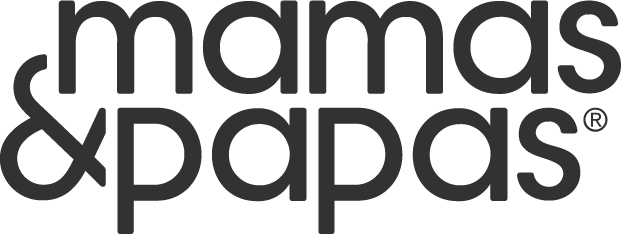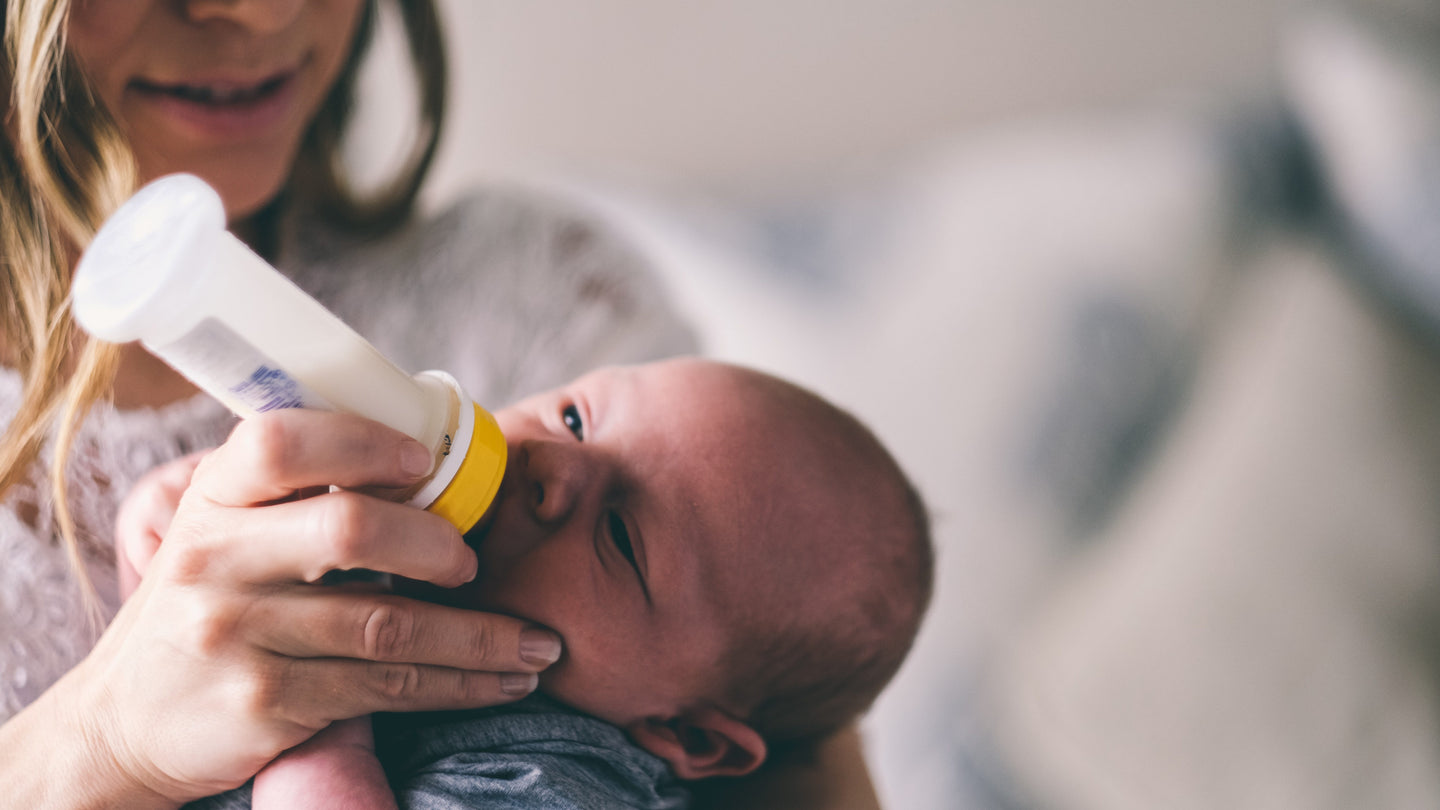From how to do it to how often, when to start and what equipment to buy. Here’s everything you need to know about bottle-feeding your baby.
If you’re feeling a little overwhelmed at the prospect of bottle feeding your baby, you’re not alone. Many mums experience this at first.
There’s a lot to get to grips with. From how much milk your baby needs to how often you should feed them, and that’s before you even start thinking about what bottles to buy or which formula is best for your baby! But don’t worry; bottle feeding isn’t nearly as complicated as it might seem.
Why would I bottle feed my baby?
The World Health Organization and Department of Health recommend that infants are exclusively breastfed for their first six months of life. However, there are lots of reasons for bottle feeding your baby. Some mums opt to exclusively bottle feed from birth. Others breastfeed but supplement with bottles of expressed breast milk or formula. And lots of mums switch from breastfeeding to bottle-feeding in preparation for returning to work. Whatever your reasons, follow our guide and you’ll soon be bottle feeding your baby with ease.

What are the benefits of bottle feeding?
One benefit of bottle feeding is that other family members can help with feeds. "This can relieve some of the pressure new mums may feel", says Lisa Clegg, maternity nurse and author of The Blissful Baby Expert.
“Bottle-feeding enables you to have an early night while your partner does the last feed of the evening. , so you can catch up on much-needed sleep before the night feeds,” she explains. “Feeding is also a huge part of bonding, so bottle feeding can give fathers important bonding time with their baby.”
What kind of equipment do I need for bottle feeding?
If you’re exclusively bottle feeding you’ll need between six and 12 bottles, slow-flow teats, sterilising equipment, a bottle brush for cleaning bottles after each use, and formula milk. If you're expressing breastmilk, you’ll also need a breast pump and sterile storage bags for keeping milk in the fridge or freezer.
If you’re using formula milk, Lisa recommends investing in a machine which quickly prepares bottles at the correct temperature. “Many mums find these indispensable. They save you pacing the floor with a hungry, impatient baby while you’re waiting for the milk to cool down or for the kettle to boil.”
How much formula does a baby need and how often?
Formula milk comes in two different forms; ready-to-drink cartons of sterile liquid infant formula and powdered infant formula.
Information on formula packaging outlines how much milk to prepare for each feed, based on your baby’s age and weight. Powdered formula is not sterile, so follow the guidelines carefully to reduce the risk of your little one becoming ill. Make up each feed as your baby needs it, using freshly boiled water at a temperature of 70°C or above.
At birth, your baby’s stomach is about the size of a marble. This size means they’ll need a bottle every three to four hours. As they grow, they’ll drink more and go for longer periods between each feed.
“The amount of milk your baby needs also depends on their appetite,” adds Lisa. “Some babies drink 40-60ml per bottle, but others easily demolish 100-120ml at each feed from birth.
At what age can I bottle feed my baby?
You can bottle-feed your baby formula milk from birth, as long as you choose milk appropriate for their age. First infant formula is the only formula milk you should give a newborn baby, according to Unicef. They can continue drinking this once you introduce solid foods at around six months, and right up until they’re a year old. At this point they can consume whole cows’ milk.
Mum-to-Mum Advice
“If your baby happily lasts three to four hours between feeds, they’re on roughly the right amount of milk. If they’re showing signs of hunger sooner, try offering a little more milk. If they suddenly seem hungrier than usual, they might be having a growth spurt, so follow their cues and remember you can’t overfeed a newborn – they’ll stop drinking when they’re full.”
“Bottle-feeding has changed since the days when it meant feeding your baby a certain quantity of milk at set times – it’s perfectly possible to feed your baby on demand, just like a breastfeeding mum, once you get the hang of it. And get the fancy bottle preparation machine. It’s so worthwhile.”
Emma, 41, Bangor
“Bottle-feeding meant my husband and my two year old could be a part of feeding my younger daughter. It helped my husband bond with our babies and I appreciated help with the night shifts. It has been a stress-free process and relaxed experience for both of our babies.”
Annie, 33, London
How should I bottle feed my baby?
Position yourself comfortably in a chair with plenty of support for your back. Cradle your baby close, supporting their head in the crook of your arm. Gently brush their lips with the teat and wait for your baby to open their mouth. To reduce the amount of air your baby swallows during bottle-feeding – which can result in excess wind – hold the bottle at an angle that fills the teat with milk. And don’t forget to wind your baby after each feed.
What does propping the bottle mean and should I try this?
Bottle propping is not advised. It means resting your baby’s bottle against a pillow or other object instead of holding it for your little one. Bottle propping causes milk to pool in your baby’s mouth, which may damage their teeth or reach their ears via the Eustachian tube. This could cause ear infections. It could also cause your baby to choke.
Can I mix bottle feeding and breastfeeding?
Yes! It's sometimes called 'combination feeding' or 'mixed feeding'. This involves breastfeeding your baby for some feeds and bottle feeding formula milk or expressed breastmilk at other times. You might do this so your partner can help with feeds; if you’re returning to work but wish to continue breastfeeding your baby in the mornings and evenings; or because of a medical issue such as tongue-tie. Tongue-tie can prevent your baby from latching on well enough to get sufficient milk via the breast.
How can I introduce a bottle to my breastfed baby?
Breastfeeding and bottle feeding are very different experiences for your little one. Some babies find a bottle much easier to drink from. To avoid confusing them, it’s best to wait until breastfeeding is well established before introducing a bottle.
Lisa advises all breastfeeding mums introduce a regular daily bottle of expressed milk by the time the baby is between two to three weeks old. As long as they are latching on at each feed, getting plenty of milk, and feeding regularly, of course.
“Lots of parenting experts advise against introducing a bottle this early so some mums worry about baby refusing the breast, but in my experience as a maternity nurse, breastfed babies generally continue to love being breastfed. In contrast, most breastfed babies will completely refuse the bottle if you leave it longer than two to three weeks to introduce one, which can create problems for mums returning to work or intending to leave their baby with another caregiver.”
Introducing a bottle to a breastfed baby doesn’t necessarily reduce milk supply or lead mums to stop breastfeeding, according to Lisa. She says: “Many mums I work with report feeling able to continue with breastfeeding for longer after introducing a bottle, precisely because they have the flexibility of being able to leave the baby in someone else’s care.”
What is paced bottle feeding?
Paced bottle feeding is a method sometimes used by breastfeeding mums when introducing a bottle feed. The idea is to make a baby work harder on the bottle to get the milk, similar to the way a breastfed baby has to suck at the breast to stimulate milk flow, so the baby doesn’t find the bottle ‘easier’ and become reluctant to breastfeed.
Lisa doesn't recommend paced bottle-feeding and says most babies happily continue to take the breast if breastfeeding is well established before bottles are introduced. “Many breastfeeding mums have a very fast let down which is similar to the flow of milk from a bottle, so a baby who is used to this could find paced feeding very frustrating,” she says.
An alternative to paced bottle feeding is to choose teats designed to closely resemble the breast.
How do I bond with my baby while bottle feeding?
While some mums worry that it'll be harder to bond with their baby if they’re not breastfeeding, Lisa assures us this isn’t the case. “What promotes bonding is the way you interact with your baby during feeds, not the feeding method,” she says. “Cuddling, talking, making eye contact and soothing them with your voice make the bonding experience – and not being on your phone while feeding!”
If you feel that Breastfeeding may work better for you, then don't forget to read our Guide to Breastfeeding.
Also, we have a guide for what parenting essentials you’ll need, whether you bottle or breastfeed.













